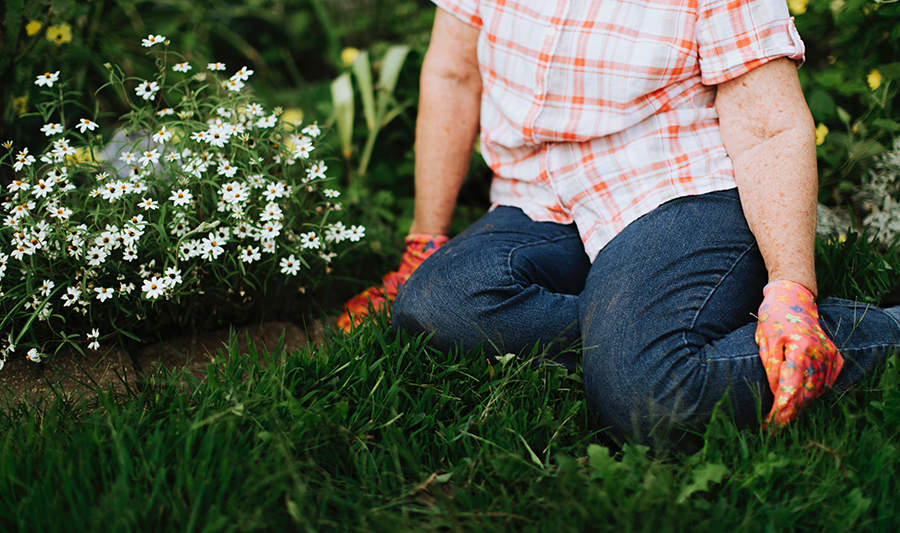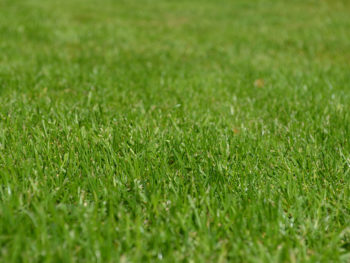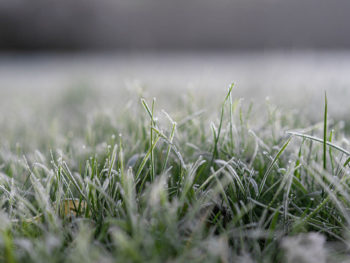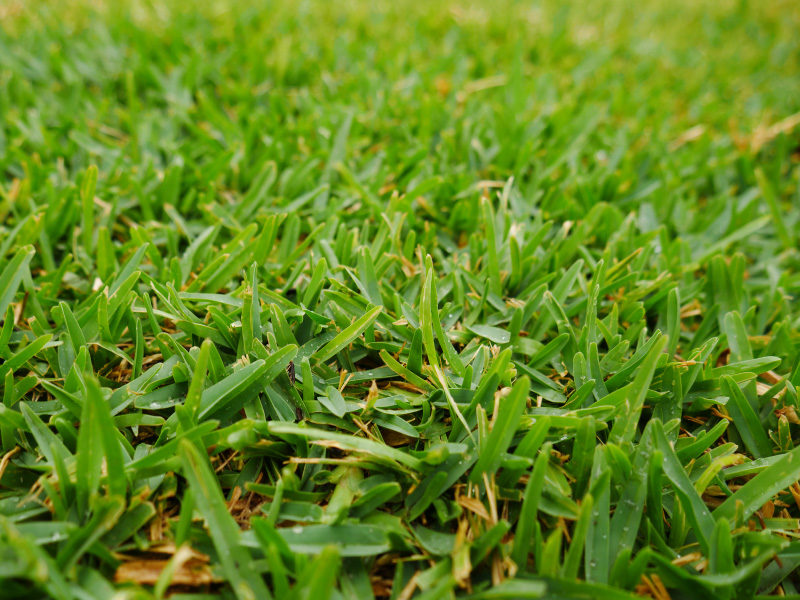If you’re like most of us, your lawn may be looking a little bit sad and sorry for itself as we come into spring. Even with the best of intentions, it’s easy to let your lawn go over winter. Now you’re faced with a brown and unhealthy-looking lawn, bare patches, or a build-up of weeds. If this is sounding familiar, read on to find out how you can repair the damage and get your lawn flourishing again as we enter the warmer months.
Clean and tidy the lawn
You may find a lot of debris has collected on your lawn, from autumn leaf falls and winter winds. Now is the time to give your lawn a good rake and clear away leaves, branches and any other debris that may have accumulated. This will allow maximum sunlight and air to reach the grass, which is necessary for good lawn health.
Get mowing
Once the air temperature starts to warm up, the soil temperature will also increase, and the lawn will come out of dormancy and enter its growing phase. This means your lawn will start to look healthier – but it also means more mowing. Regular mowing will help to reduce weed growth, so begin mowing as soon as your lawn looks like it needs it. If you’ve been mowing with the catcher on over winter, now it the time to switch to mulch mowing. Returning the grass clippings to the lawn will return 15% more nutrients back into the soil. In most cases, don’t cut your lawn to lower than one third of its height, as this may leave it exposed to diseases and weather extremes.
Remove thatch
All lawns experience thatch, which is the build-up of grass runners on top of the soil that clog the grass. When thatch levels build up to a point where it prevents water, air and fertiliser from reaching the soil, then it needs to be removed. You can do this by lowering your lawn mower and giving the lawn a close haircut to remove all signs of green growth. If the thatch isn’t too thick however, try giving the lawn a thorough raking to strip out the dead, brown grass and allow more light to penetrate.
Check for compaction and aerate
Your soil can become compacted over time, particularly in areas with heavy foot traffic.
Aerating the lawn will increase air circulation and reduce soil compaction, making the lawn more efficient in using water and sunlight. You can hire a lawn aerator or do it yourself by using a garden fork or lawn coring machine to punch small holes in the soil to break up compaction.
Apply a light dose of fertiliser
Spring is the most important time of year to apply a light dose of balanced, slow-release lawn feed. This will invigorate the lawn after the dormancy of winter and give it a boost as it goes into summer. A light dusting of organic or inorganic fertiliser at the rate specified on the product label with give your lawn the kick start it needs. By mixing a wetting agent in with your fertiliser, you can kill two birds with one stone and allow for deeper water penetration of the soil. For advice on the best type of fertiliser for your lawn, contact us at Horsham Turf on 03 5382 3508 or email info@horshamturf.com.au.
Remove weeds
If you have a close-growing type of lawn such as Sir Walter that outcompetes weeds well, all you might need is a good close mowing to deal with the worst of any weed invasion. In other grass varieties, you might need to remove weeds by hand or apply a suitable herbicide. Call Horsham Turf on 03 5382 3508 or email info@horshamturf.com.aufor advice on the best herbicide to use on your lawn.
Don’t try to remove weeds as soon as the weather starts warming up, however. It’s actually better to treat weeds around three weeks after fertilising at the start of spring. The application of lawn fertiliser will open up the pores of the weeds and allow any other weed seeds to come to the surface of the lawn, so that the herbicide is more effective.
Fix any dead patches
It’s common for your lawn to look sparse, patchy or brown after winter. Now is the perfect time to over sow those areas with new seed. Remove any dead grass clogging the area and top up with loose soil, then sow the new lawn seed. Water in well, and don’t mow until the grass has reached 8 – 10cm in height. Keep your cutting height high in these areas so the lawn has a chance to establish and even out.
Water as necessary
Once the grass begins to grow, your watering will need to increase as the temperature rises. Cooler air and spring winds can be drying to the grass, so aim for two deep waterings per week to encourage new leaf growth. The soil and the nights may still be cool, especially in early spring, so a deep watering may last longer than expected. The level of watering will depend on your soil, location and rainfall. Before watering, check the lawn to see if it really needs it. Burrow your finger down into the lawn, and don’t water it if it’s damp. You may only require minimal top-up watering if you have plenty of rainfall. Increase the water application if it’s very dry.
Restoring your lawn to good health and vitality doesn’t have to be a daunting task. With a few hours work and a little care and attention, your lawn can spring back to life and be ready for summer use.
If you’re thinking about installing a new lawn, now is a great time. To read more about why Spring is the best time to plant a new lawn, click here: https://www.horshamturf.com.au/whens-the-best-time-to-install-a-new-lawn/.





 When’s the best time to install a new lawn?
When’s the best time to install a new lawn?
